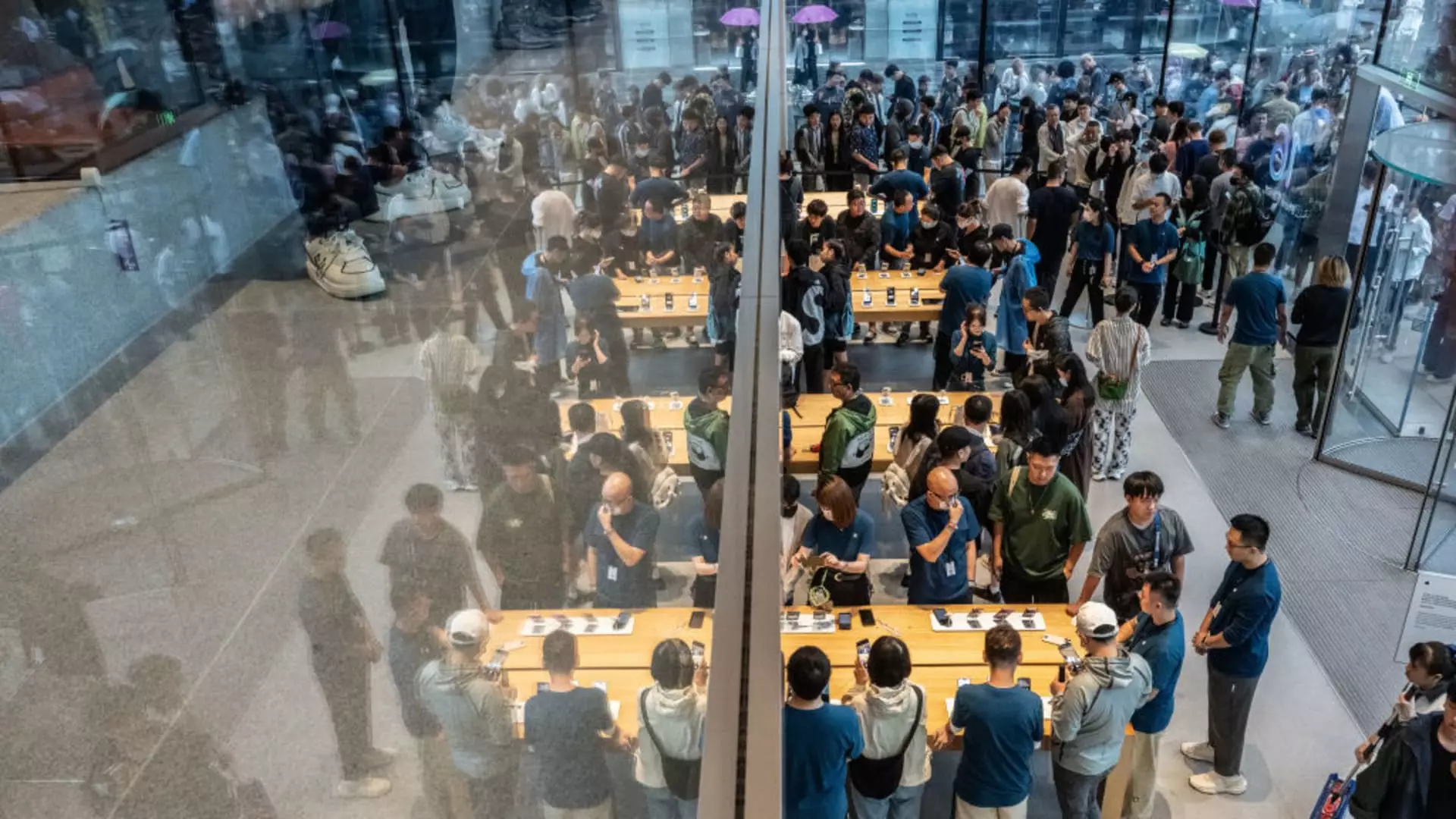The smartphone market in China, long dominated by international giants like Apple, has been witnessing a transformative shift, particularly since the introduction of Huawei’s latest offerings. In recent spot checks conducted in Beijing, the competition between Apple’s new iPhone 16 series and Huawei’s premium Mate XT trifold phone has become more pronounced. While Apple has been a staple among affluent consumers, Huawei’s resurgence seems to be compelling even dedicated Apple users to consider alternatives.
Spot observations revealed an intriguing statistic: out of ten individuals surveyed about their smartphone preferences, a significant eight expressed interest in both the new Huawei and Apple phones. This response raises pertinent questions about brand loyalty and consumer behavior in a rapidly evolving marketplace. Apple’s iPhone 16 Pro Max, priced at $1,199, stands in stark contrast to Huawei’s Mate XT, which starts at over $2,800. Such high pricing strategies from Huawei, despite the economic fluctuations and stiff competition, indicate a bold attempt to redefine luxury in the smartphone segment.
Huawei has made concerted efforts to revive its smartphone market standing following the stringent U.S. trading restrictions imposed in 2019. These sanctions not only inhibited Huawei’s technological advancement but also posed challenges for its global reputation. Canalys reported that in the second quarter, Huawei ranked fourth in the Chinese smartphone market, while Apple, previously a market leader, surprisingly fell out of the top five for the first time, overtaken by local competitors.
The stark difference in pricing on second-hand platforms paints an even grimmer picture for Apple’s position. The average resale price of Huawei’s Mate XT fluctuated between 50,000 yuan to 60,000 yuan ($7,100 to $8,520), highlighting a willingness among consumers to invest heavily in a high-performance model. In contrast, the iPhone 16 Pro Max was listed for a far more accessible price range of 10,500 yuan to 16,300 yuan. This disparity raises concerns for Apple about its perceived value against Huawei’s innovative design and perceived exclusivity in the trifold category.
The resale market also reflects a growing trend among consumers who may not be purchasing these devices for personal use but rather as an investment or resale opportunity. As observed, many buyers at Huawei’s flagship store appeared interested in the trifold phone primarily for reselling it at a higher price, indicating a strong speculative market surrounding Huawei’s latest release.
The consumer experience during the launches of the iPhone 16 and Huawei’s Mate XT underscores different levels of brand engagement. Apple enthusiasts displayed their commitment by lining up as early as 5:30 a.m. before the store opened at 8 a.m. This dedication showcases Apple’s robust brand loyalty amongst its consumers. However, the same cannot be said for Huawei, where no significant queues formed for the Mate XT, pointing towards varying consumer dynamics.
On the same day, Huawei commenced its deliveries at precisely 10:08 a.m. to pre-reserved buyers, but very few appeared to take immediate interest in making on-site purchases. The notion that many prospective customers were retail investors raises questions about Huawei’s direct consumer appeal compared to Apple’s established client base.
A noteworthy encounter at the Huawei store captured the mixed sentiments around brand choice. One consumer, identified only as Yang, expressed a desire to experiment with the Mate XT but also acknowledged his current usage of the iPhone. This reflects a growing willingness among users to explore new functionalities that other brands might offer, especially when their existing devices seem stagnant in innovation.
Even a confirmed Apple loyalist, Wang, indicated a curiosity towards Huawei’s offerings, intending to await the release of the iPhone 17 for advancements in artificial intelligence. Such openness to alternatives may signify a turning tide where brand devotion is increasingly tied to technological advancement and user experience rather than mere brand affiliation.
The dynamic between Huawei and Apple in China’s smartphone landscape reveals a broader trend of shifting consumer attitudes and heightened competition. As users demand more innovative features, the allure of Huawei’s high-end devices seems to challenge Apple’s longstanding dominance. This evolution not only reflects the ongoing changes in consumer preferences but also suggests that fierce competition will continue to reshape the smartphone industry in profound ways. The critical fabric of loyalty is being woven anew, and companies must adapt or risk being left behind amidst the changing tides of consumer technology.

